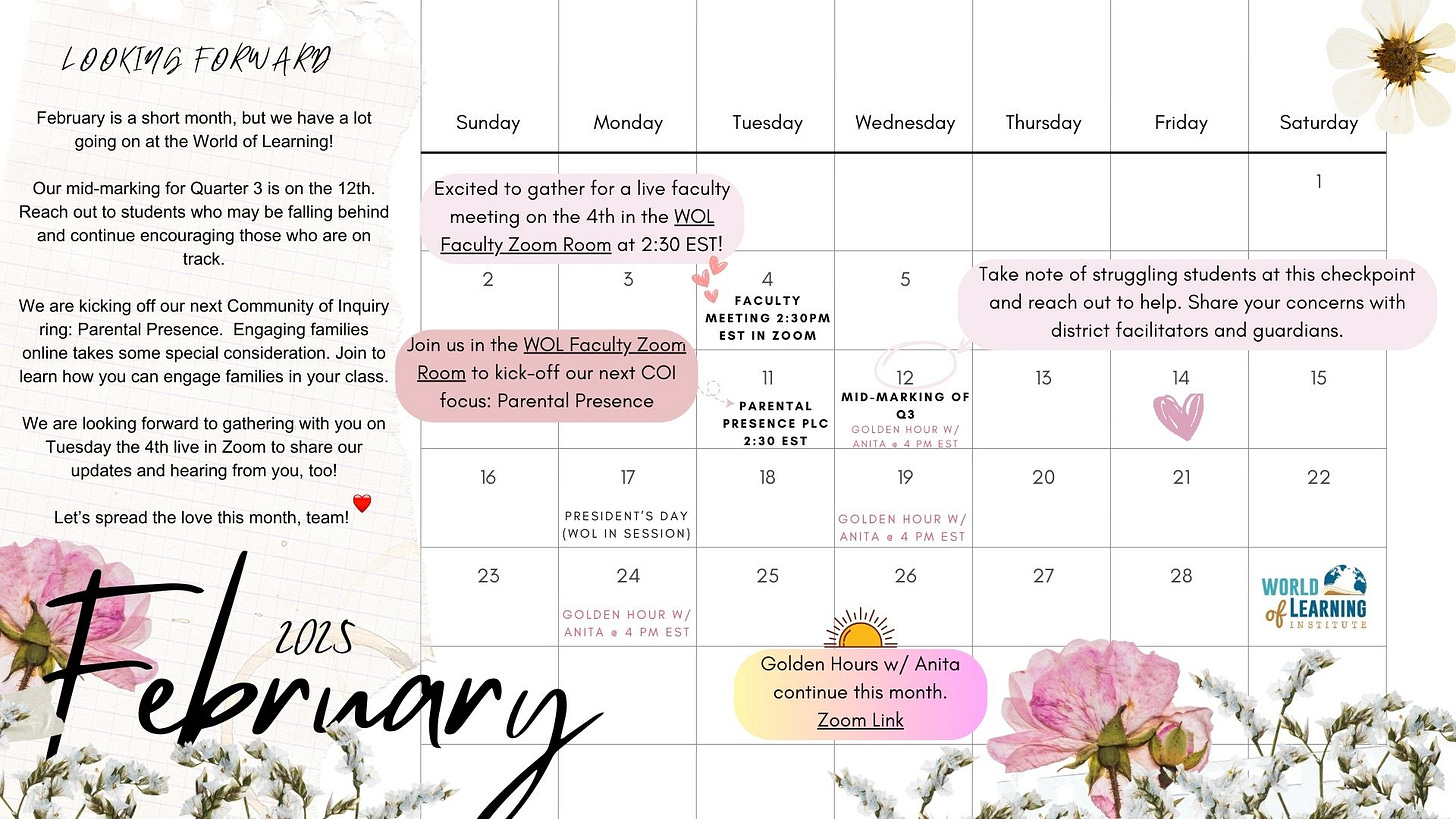Greetings WOL Friends!
This week, Olivia asks the age-old question: Is her child ready for Kindergarten? This is just the beginning of her inquiry into how we can support our children in being their best selves!
As a grandmother, I watch in awe as both my children (now adults) navigate choices and opportunities for their own children. Being a parent and now a grandparent has really influenced my decisions about how I teach and lead.
What is the biggest influence on your choices about education?
Have a great week!
Pat
How much does age matter?
by Olivia Grugan
My spouse and I sat down with our 4-year-old’s teacher last week to discuss whether he should start Kindergarten this coming school year. Based on his July birthdate, we have the option to “hold him back” another year.
This is new parenting territory for me. So I did some cursory research:
Late starters have initial academic advantages, but those tend to diminish over time (Read more)
Late starters may have better social and behavioral outcomes later in elementary school
Earlier starters are more likely to be diagnosed with ADHD (Read more)
Families with higher incomes are more likely to hold their children back. This may be because they don’t have the same financial pressures regarding paying for another year of child care. (Read more)
This research highlights how age is an imperfect determinant of readiness—whether academically, socially, or behaviorally. It also raises a bigger question: If children develop at different rates, why do we rely so heavily on age-based grouping in schools?
Benefits of multi-age grouping
For our family, this decision feels less consequential than it may for others. Our child attends a Montessori preschool/elementary school and is currently in a multi-age classroom for 3-6 year olds. Our decision will just determine whether he is designated a kindergartener next year; he will be in the same classroom either way. Children in that room are presented with learning materials that are appropriate for their development regardless of their age.
But it got me thinking about what role age plays in our programs at the World of Learning.
How Extended Campus does age-based learning
When we took on a full-time K-12 virtual program last year, we had a number of decisions to make about age. Here are a few of them:
Homerooms: We decided that our homerooms would be banded. In elementary school, we created two larger bands: Grades K-3 and 4-6. In high school, we decided to create small bands of just two grades: 7-8, 9-10 and 11-12. We considered development, safety and community building to make these decisions.
Courses by grade: We decided not to designate a grade for our high school courses. Instead, our storyboarded courses allow students, parents and districts to identify topics and themes that are of interest while still facilitating progression through important skills. Rather than choosing “English 9” for all ninth graders, for example, we have an English course that looks at Perspectives while providing foundational literary analysis skills for learners to build on in more advanced courses.
Common spaces: We decided that our elementary students would have common spaces across two grade bands (K-3 and 4-6) for Lunch and Learning, Read Alouds, Games etc…
How virtual learning makes multi-age grouping easier
The research supports our Extended Campus decisions. Multi-age classrooms are good for reading and language development, as well as overall academic achievement. They are also good for behavioral maturity and relationship skills. (See here and here to learn more.)
Virtual learning makes grouping and re-grouping of students easy. We can invite students to come at different times as they manage a more flexible schedule. We can use breakout rooms to create homogenous or heterogeneous groups. Students can try something new out with lower stakes by muting themselves and just observing the first time they attend.
As I reflect on my child’s experience and our work at Extended Campus, I’m glad we are able to use multi-age grouping to reduce the pressure of somewhat arbitrary age-based decisions.
What do you think? What multi-age spaces exist in your school/program? Are there ways to add more? What might those look like?
(And while we are here… if you have any parenting advice about the kindergarten timing decision, I’m all ears!)

If you want to know more about the World of Learning and how we can help you or your district, contact us!
Quick Bites
Take a look at a past issue!







Thank you Olivia, Pat and the World of Learning Institute for this informative, helpful information about age and when to begin a child's formal education.